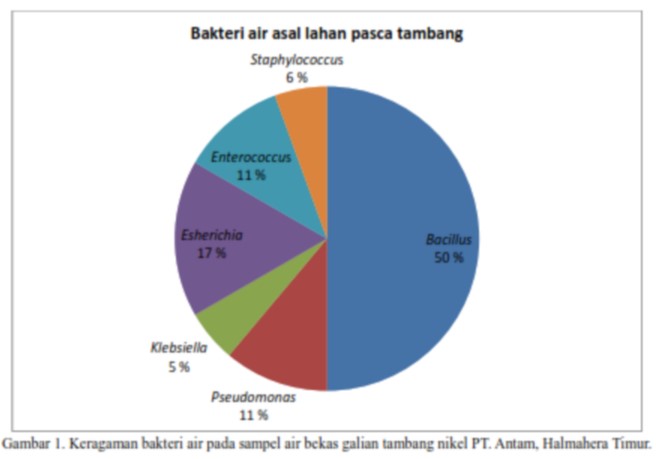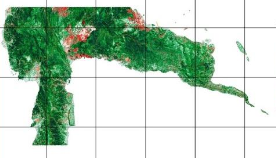Potential of Nickel (Ni) Phytoremediation of Adaptive Species on Revegetation Land, PT. Vale Indonesia (Tbk). Pomalaa Site Kolaka Regency
Abstract
This research aimed to determinate the type of adaptive plant and its potential of phytoremediations on nickel revegetation land, PT. Vale Indonesia Tbk. Pomalaa site Kolaka Regency. The research was carried out in March - October 2016, with stages of explation and identification of adaptive plant species as well as analysis of nicel leaves and soil content using HNO3 or HClO4 method and (AAS) Atomic Absorbtion Spectrophotometry test. 12 types of adaptive plants from 12 genera and 10 family. That grow naturally on nickel revegetation land PT. Vale Indonesia Tbk. site Pomalaa. Species from tree habitus thet freguently found, namely Gymnostoma sumatrana, Sarcotheca celebica, Parinaria corymbosa, Timonius celebicus, Weinnmania fraxinea, Alstonia macrophylla. Based on analysis result, there four species that was categorized as low acummulator Nepenthes maxima, Cheilanthes tenuifolia, Timonius celebicus, Sarcotheca celebica. The highest absorber is S. celebica with nickel content 595 mg/kg dry weight leaves. S. celebica potential to be developed as nickel phytoremedian.
Hak Cipta (c) 2017 Jurnal Wasian

Artikel ini berlisensi Creative Commons Attribution-NonCommercial 4.0 International License.
Copyright and License
All articles published in Wasian Journal are the property of the authors. By submitting an article to Wasian Journal, authors agree to the following terms:
-
Copyright Ownership: The author(s) retain copyright and full publishing rights without restrictions. Authors grant the journal the right to publish the work first and to distribute it as open access under a Creative Commons Attribution 4.0 International License (CC BY 4.0).
-
Licensing: Articles published in Wasian Journal are licensed under a Creative Commons Attribution 4.0 International License (CC BY 4.0). This license allows others to share, copy, and redistribute the material in any medium or format, and adapt, remix, transform, and build upon the material for any purpose, even commercially, provided that proper credit is given to the original author(s) and the source of the material

This work is licensed under a Creative Commons Attribution 4.0 International License. -
Author's Rights: Authors are permitted and encouraged to post their work online (e.g., in institutional repositories or on their website) prior to and during the submission process, as it can lead to productive exchanges and greater citation of published work.
-
Third-Party Content: If your article contains material (e.g., images, tables, or figures) for which you do not hold copyright, you must obtain permission from the copyright holder to use the material in your article. This permission must include the right for you to grant the journal the rights described above.
-
Reprints and Distribution: Authors have the right to distribute the final published version of their work (e.g., post it to an institutional repository or publish it in a book), provided that the original publication in Wasian Journal is acknowledged.
For the reader you are free to:
- Share — copy and redistribute the material in any medium or format for any purpose, even commercially.
- Adapt — remix, transform, and build upon the material for any purpose, even commercially.
- The licensor cannot revoke these freedoms as long as you follow the license terms.
Under the following terms:
- Attribution — You must give appropriate credit , provide a link to the license, and indicate if changes were made . You may do so in any reasonable manner, but not in any way that suggests the licensor endorses you or your use.
- No additional restrictions — You may not apply legal terms or technological measures that legally restrict others from doing anything the license permits.
Notices:
You do not have to comply with the license for elements of the material in the public domain or where your use is permitted by an applicable exception or limitation .
No warranties are given. The license may not give you all of the permissions necessary for your intended use. For example, other rights such as publicity, privacy, or moral rightsmay limit how you use the material.
Artikel paling banyak dibaca berdasarkan penulis yang sama
- Febriyani Febriyani Febriyani Febriyani, Faisal Danu Tuheteru Faisal , Asrianti Arif Asrianti , Husna Husna Husna, The Success of Root Cuttings is Endangered Kalapi (Kalappia celebica Kosterm.) by Giving Rootone-F Growth Regulator , Jurnal Wasian: Vol 8 No 2 (2021): December




